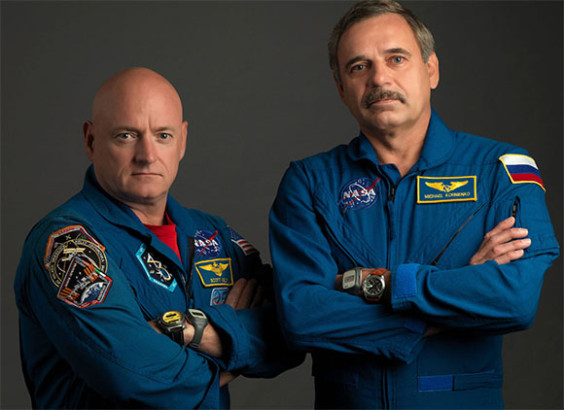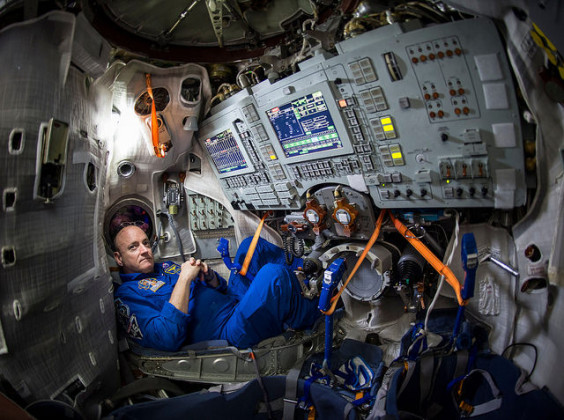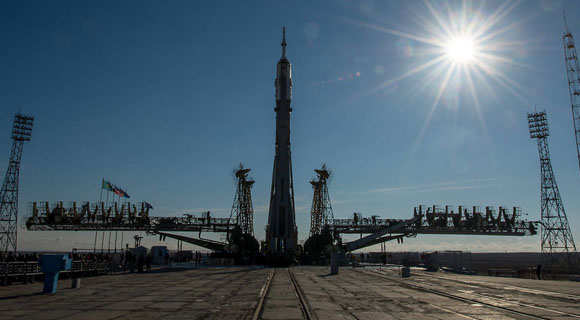WATCH LIVE: One-Year Crew To Launch Today
By NASA // March 27, 2015
live coverage will begin at 2:30 p.m.
LIVE STREAM: NASA astronaut Scott Kelly and Russian Cosmonaut Mikhail Kornienko will launch to the International Space Station, beginning a one-year mission in space, testing the limits of human research, space exploration and the human spirit. The launch is set for 3:42 p.m. EDT but live coverage will begin at 2:30 p.m.
BAIKONUR COSOMODROME, KAZAKHSTAN — NASA astronaut Scott Kelly and Russian Cosmonaut Mikhail Kornienko will launch from the Baikonur Cosmodrome in Kazakhstan to the International Space Station, beginning a one-year mission in space, testing the limits of human research, space exploration and the human spirit.
 The launch is set for 3:42 p.m. EDT but the live coverage will begin at 2:30 p.m.
The launch is set for 3:42 p.m. EDT but the live coverage will begin at 2:30 p.m.
Most expeditions to the space station last four to six months.
By doubling the length of this mission, researchers hope to better understand how the human body reacts and adapts to long-duration spaceflight.
This knowledge is critical as NASA looks toward human journeys deeper into the solar system, including to and from Mars, which could last 500 days or longer.

It also carries potentialbenefits for humans here on Earth, from helping patients recover from long periods of bed rest to improving monitoring for people whose bodies are unable to fight infections.
Long exposure to a zero-gravity environment can affect the human body in multiple ways. Some physical symptoms can include changes to the eyes,muscle atrophy and bone loss.
Human psychology is also an important area of study, as the effects of living in isolated and small spaces will be important to understand ahead of future human missions to Mars.
Research collected from the one-year mission can help NASA and the international partners reduce risks and better understand how to ensure astronauts will thrive on longer missions.
There are seven key elements of research on the one-year mission.
ABOVE VIDEO: Aboard the International Space Station, the new Expedition 43 Commander Terry Virts of NASA and Flight Engineer Samantha Cristoforetti of ESA (European Space Agency) discussed the progress of their mission and key activities in the weeks ahead in a pair of in-flight interviews March 13 with WTOP Radio in Washington, D.C,. and Euronews. Virts took over command of the station March 10 from NASA’s Barry Wilmore, who returned to Earth March 12 aboard a Russian Soyuz spacecraft with two Russian cosmonaut crewmates.
Functional studies will examine crew member performance during and after the 12-month span. Behavioral studies will monitor sleep patterns and exercise routines.

Visual impairment will be studied by measuring changes in pressure inside the human skull.
Metabolic investigations will examine the immune system and effects of stress. Physical performance will be monitored through exercise examinations.
Researchers will also monitor microbial changes in the crew, as well as the human factors associated with how the crew interacts aboard the station.
While Scott Kelly is in space, his identical twin brother, retired NASA astronaut Mark Kelly, will participate in a number of comparative genetic studies.
Some of these experiments will include the collection of blood samples as well as psychological and physical tests.

These tests will track any degeneration or evolution that occurs in the human body from extended exposure to a zero-gravity environment.
The new twin studies are a multi-faceted national cooperation between universities, corporations and government laboratory expertise.
All research gathered from both the American and Russian crew members will be shared between the countries, an important step in reducing cost and improving efficiency for all future space station research.
CLICK HERE FOR MORE SPACE NEWS














